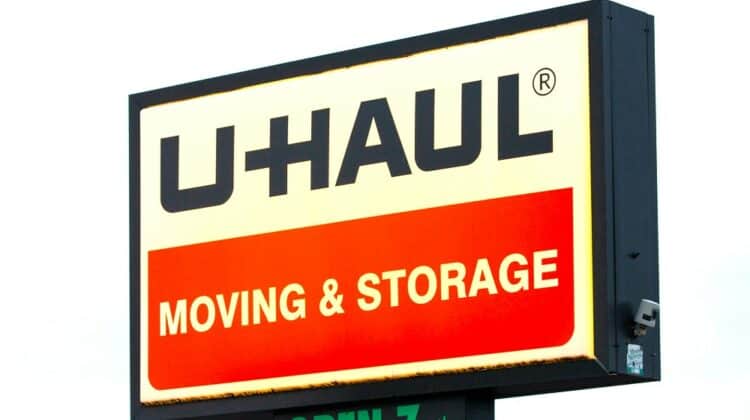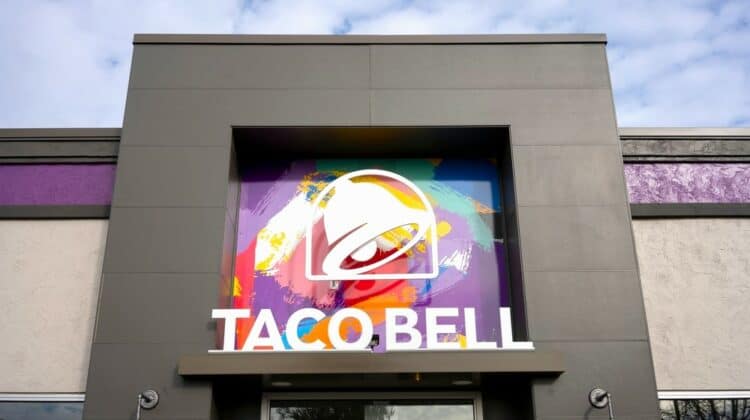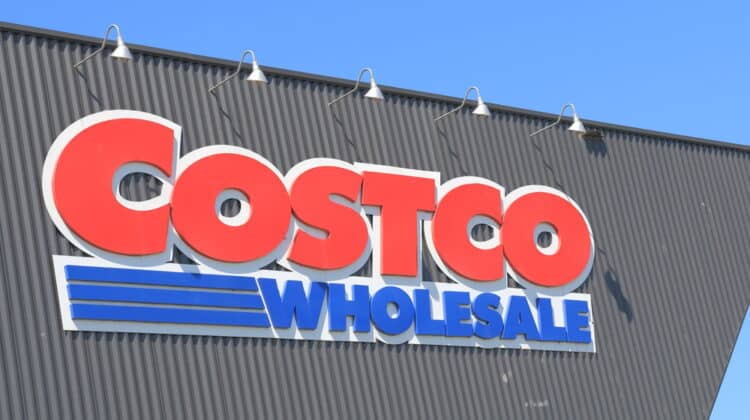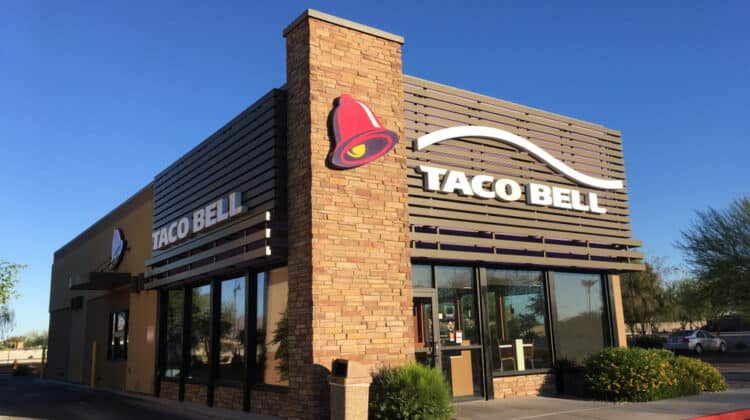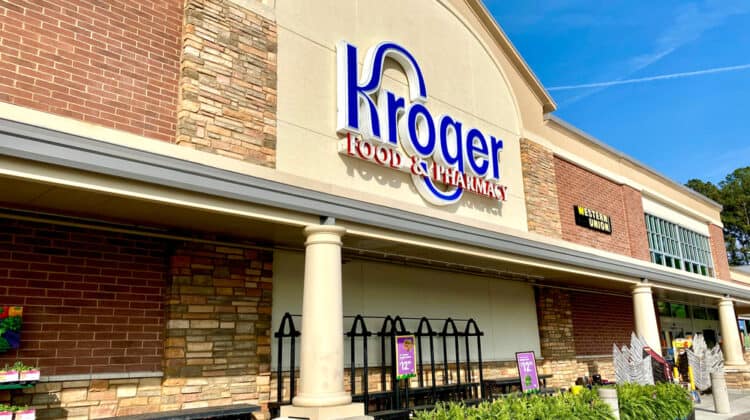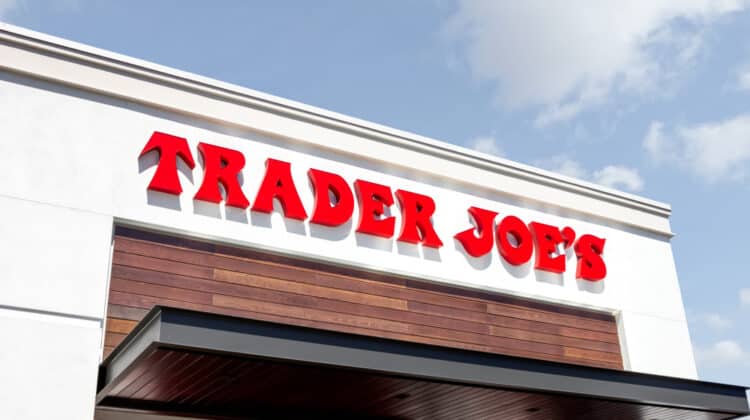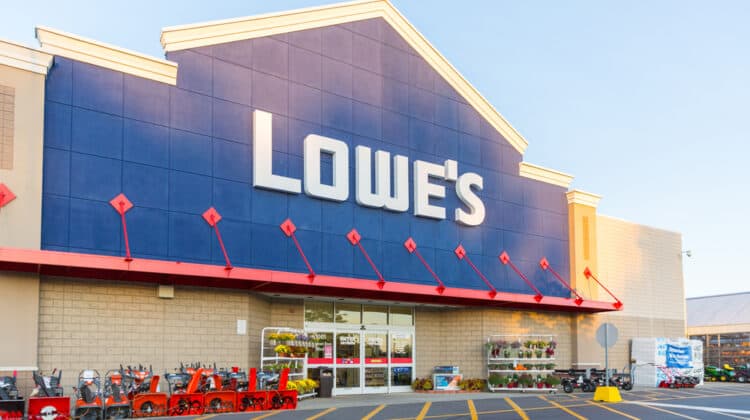
For many households, Spam is a go-to snack or ingredient that helps keep their budget tight.
Over time, however, as Spam has seen a comeback, the prices have increased with it.
You may wonder what changed to make an inexpensive product like canned meat suddenly expensive.
Here’s why Spam is so expensive.
Why Is Spam So Expensive? (Top 10 Reasons)
1. It’s Processed

Spam undergoes a lot of processing during its manufacture.
It uses ground pork and ham which combine with other ingredients.
Many of those ingredients include dyes to make the meat look more appetizing and preservatives to help increase the shelf life of the meat.
Salt is another important ingredient that’s used a lot.
Once the mixture is ready, it’s heated and placed in a can.
The can is then heated.
The final step to make Spam is to add a label.
When compared to fresh meat, Spam is more expensive because it has to pass through a factory.
There are several machines and hands that work with the meat before it’s ready for shipping.
That takes money.
The cost to run the processing of Spam reflects in the price.
Consumers make up the cost.
Fresh meat doesn’t require nearly as much handling.
At most, the animal undergoes butchering, and then the meat needs to be frozen.
Some manufacturers may remove bones, but otherwise, the meat sells as it is.
Because fewer people touch the meat, there’s less cost to produce it.
2. Shelf Life

Another reason that Spam is so expensive is its shelf life.
It can last anywhere from two to five years.
It’s why it was a popular choice for soldiers in World War Two.
Due to its long-lasting nature, it made a great ration for them.
Because it can last for years, consumers don’t need to buy cans of Spam as often.
They can open a can when they feel like splurging, then put it away again until they feel like splurging again.
They don’t have to eat the entire thing once it’s open like they would need to with many other types of meat.
Since consumers don’t need to buy it as often, manufacturers have to make up for the loss in profit by increasing the price.
It allows them to make revenue even though they sell fewer products over time.
In addition, the process by which Spam receives its extended lifespan is also costly.
Manufacturers need to cover those costs by selling Spam at a certain price point.
That price point is expensive for many consumers who used to buy Spam when it was cheaper.
3. Trending

Most food types undergo some type of renaissance.
Spam is undergoing one of its own right now.
Many consider Spam to be low-grade food, but it’s showing up in famous restaurants around the world.
Chefs are looking to challenge themselves and transform Spam into something high-class and expensive.
Recipes like Spam Musubi and Spam Fried Rice are becoming popular in restaurants everywhere.
These recipes use Spam as the base and then highlight the food by using it in different ways.
Because chefs are transforming Spam, many people are looking to try to do the same at home.
With its increasing popularity, the demand for Spam increases.
Since the demand is increasing, Hormel, the creators of Spam, can increase its price to ensure there’s enough of a supply to go around.
You’ll also find that these Spam dishes in restaurants are expensive because they’re considered a delicacy or trendy dish.
Everything is expensive when it’s trending.
Once chefs grow tired of Spam, the price will likely come down a bit as Spam falls from popularity again.
4. Nostalgia Niche

When people think about Spam, there’s always a sense of nostalgia.
It’s a very American product.
It’s been around for almost 100 years.
One of its most important roles was to keep soldiers fed during World War Two.
Spam has changed with the times, too.
When the company saw that people were buying less of it, it decided to change its advertising.
Instead of being the main dish, Hormel began to advertise Spam as an ingredient.
It became a staple for sandwiches, sides, stews, and other dishes.
Families on a tight budget could rely on Spam to get them through until their next paycheck.
As something that’s considered both reliable and American, there’s a sense of nostalgia around it.
As everyone knows, nostalgia sells.
The concept of nostalgia is that it plays upon the pleasant memories of one’s past.
It gives one a sense of comfort because it reminds one of the good old days.
Spam does this by reminding individuals of their homes.
It reminds them of the meals that their parents used to make for them.
Those memories are often tied to pleasant feelings.
In most cases, looking back on one’s childhood often makes one nostalgic and reminiscent.
There’s a longing to go back to those simple times.
Those feelings are something that buying and eating Spam can evoke.
Hormel knows this.
Since it’s trending and popular, it plays up that nostalgia factor.
Consumers are more willing to buy Spam to recapture old memories even at a higher price point.
They’re not buying Spam because they enjoy it or need it, but because it helps them remember the old times.
5. Brand Name

Spam is as popular as a product as Hormel is as a company.
When a brand is so closely tied to its product, then it can increase its price.
It’s why brand-name products are always more expensive than generic products.
Consumers are paying for the brand name.
It’s like buying a product from Gucci or Prada.
Those names are associated with luxury, but you can find just as luxurious products from lesser-known brands at half the price.
Spam is no different.
It can have an expensive price because you know that you’re buying the brand more than the product.
You can always make Spam at home.
There are other similar products like corned beef that are inexpensive.
However, because Spam is so associated with its company’s name, you have a natural impulse to buy the brand name rather than the generic product.
Hormel is a well-known brand that can charge more money for Spam because it’s a household name.
6. Swine Flu

Spam uses pork as its main ingredient.
If something happens to the pigs from the suppliers that they use, then there’s a shortage of pork to use.
Whenever there’s a shortage, you can always expect prices to rise.
That’s because there isn’t enough supply to meet demand.
Suppliers need to decrease demand by increasing the price.
It will put off enough people from buying the product until the company is able to restock again.
Swine flu is one of the major reasons Spam may face supply shortages.
It’s a type of Influenza A that impacts pigs.
In particular, it’s a respiratory disease that’s transferrable to humans.
Humans who come into contact with the diseased pigs can become very ill.
That’s why pig owners are careful when they’re separating diseased livestock from healthy ones.
If they become ill, then they can pass the disease to others.
It could shut down the plant until the disease passes through them.
There’s also a risk of becoming ill if you eat uncooked pork from a diseased pig.
Even if the meat is slightly undercooked, you put yourself at risk of becoming ill.
That’s why Hormel recalls food like Spam if there’s an outbreak of swine flu at one of its suppliers.
If you hear on the news that there’s an outbreak of swine flu, then you can expect the price of Spam to increase.
7. Shipping Problems

The shipping process can also present problems that can cost Hormel money.
Those costs add to the price of Spam at your local store.
Hormel receives its pigs both internationally and domestically.
It costs a lot of money to ship pigs across the ocean to the United States.
Live pigs are the hardest to transport.
They require food and sanitary conditions to stay healthy on the trip over to the plant.
That takes a lot of money.
Even if they slaughter the pigs beforehand, they still need to keep the meat cool and safe.
If anything goes wrong with the refrigeration units in the shipping containers, then the meat will go bad.
That’s a wasted product that can’t be used to make Spam.
Not only does it create a shortage that increases the price of Spam, but Hormel also needs to make up the difference by ordering a new supply of slaughtered pigs.
That also increases the price.
These problems can also occur domestically.
Since pigs are usually shipped over land, they still require costly accommodations to be safe and healthy.
Cooling containers on trucks can also malfunction and make any slaughtered meat inside of them spoil.
If something goes wrong during the shipping process of its meat, then you can expect the price of Spam to increase.
Otherwise, it has a high price because Hormel covers future expenses from shipping problems with its expensive price point.
8. High-Quality Meat

Hormel states that it uses high-quality meat when producing Spam.
The meat comes from the pork’s shoulder.
This area of the pig becomes extremely tender after cooking it for a long time.
Hormel does what it can to cook the meat to this level of tenderness.
It cooks the meat, then it also cooks the can with the meat inside of it to further cook and preserve the meat.
However, the tenderness of the meat is dependent on the quality of the animal.
That’s why Hormel invests in high-quality pigs to produce Spam.
A high-quality pig is an animal that has a lot of meat on it.
The meat is juicy, tender, and has a lot of flavor.
They also don’t contain any illnesses.
It’s difficult to raise high-quality pigs.
It often requires a few years of careful breeding to create the perfect family of pigs.
The problem is that since the pigs always go to slaughter, it’s difficult to maintain the line.
This is especially true if the main breeders become ill or too old to continue breeding.
It also takes a lot of investment to keep those pigs healthy.
Pigs need feeding, housing, and plenty of water.
It’s a long-term investment that may not always pay off.
Hormel pays for high-quality pigs which aren’t cheap.
Because they’re few in number, this drives up the price for Spam.
Lower-quality pigs are cheaper because they’re common.
Since Spam focuses on high-quality meat, Hormel spends a good amount of money on using juicy pork in its ingredients.
The cost of high-quality meat reflects in its price.
If the company were to use low-quality meat, then Spam would have a lower price.
9. Growth Of The Middle Class In Asian Countries

China has a history of being a pig exporter.
About 56% of China’s meat industry is pork that’s exported.
Since China has started to see an increase in its economy, it’s also starting to grow a middle class.
As the population within the middle class grows, more people are able to afford higher-priced foods like pork.
China finds itself needing to provide pork for its own people who can now afford it rather than exporting it overseas.
This means that there’s less pork to go around.
With less available pork, the price of buying pork increases.
Spam has to pay more for its pork than it did originally.
To make up for the cost and still earn revenue, they need to have a higher price.
10. History Of Affordability

A final reason Spam is so expensive is that it has a history of affordability.
Consumers buy Spam because they remember it being cheap.
The price of Spam today isn’t what it used to be.
Back in the 1940s and 1950s, you could buy Spam for only a few cents a can.
Today, it’s anywhere from $2 to $7.
Part of that is because of inflation.
The rest may be due to any of the other factors listed earlier.
However, since it has a history of being affordable, consumers make the mistake of thinking that Spam is still affordable.
All they need to do is compare Spam to fresh meat to see that isn’t the case.
Since they don’t, they buy Spam and continue to keep demand levels for the product about the same.
Since demand hasn’t decreased, the price of Spam can continue to increase until consumers stop buying it because of its price point.
Everyone associates Spam with cheap meat.
The reality is that it isn’t cheap anymore.
How To Save Money On Spam

While some may still consider Spam to be cheap, most know that this isn’t the case anymore.
If you want to save money on Spam, then here are a few tips you can use.
1. Buy It At Costco Or Aldi
The cheapest Spam is at Costco and Aldi.
These stores are known for lower prices or great deals that drive down prices.
Costco, in particular, always has a great sale going on that allows you to buy several cans of Spam at an affordable price.
Using other coupons or rewards that you have with the stores can also drive the price down further.
2. Look For Sales
Speaking of sales, if you don’t have a Costco or Aldi around you, then you should keep an eye on the sales your local store runs.
In many cases, Spam is often on sale.
Since Spam can last for years, it’s a good idea to stock up on it when it is on sale.
You could easily buy a whole year’s worth for a few dollars if you find the right sale.
3. Use Spam As An Ingredient
One way to make Spam cheaper is to not use it as a meal.
Make Spam last longer by using it as an ingredient.
Instead of opening up a can of Spam, heating it, and using it as the entrée for your meal, you should cut the Spam up and serve it as part of a sandwich or as part of a stew.
By using less of it, you won’t need to buy as much of it.
This can help you stretch your dollar and make Spam more affordable throughout the year.
4. Make Your Own
It’s not difficult to make your own Spam.
The cost of making it is often cheaper than buying Spam.
You can also make it in bulk to bring in even more savings.
You’ll need fresh meat to start cooking your own Spam.
Since fresh meat is often cheaper than Spam, you’re already saving money.
From there, you need to follow the recipe and make your own Spam that’s fresher, healthier, and cheaper.
How To Make Spam

To make Spam, you’ll need the following ingredients:
- 2.5 pounds of cubed pork shoulder
- 3 ounces of ham
- 2 cloves of chopped garlic
- 1 tablespoon of Morton’s Tender Quick
With your ingredients in hand, you’re ready to follow the recipe.
Follow these steps to make your own Spam at home.
1. Preheat The Oven
Before you can start cooking, you’ll need to prepare everything.
The oven should be your first step.
Preheat the oven to 300 degrees Fahrenheit.
2. Grind And Mince The Meat
Taking your pork shoulder, pass it through a grinder and grind it.
Then set it aside and pick up your ham.
Place the ham and your garlic inside of a food processor and mince them.
3. Mix
Place the ground pork shoulder, minced ham and garlic, and the Tender Quick into a bowl.
Mix it together.
4. Place In A Bread Pan
Put the mixture in a loaf pan.
It’s a good idea to pack the meat together.
Then cover the pan with aluminum foil.
Put the bread pan inside of a large baking dish that’s filled 3/4 of the way with water.
5. Bake
Put the baking dish inside the oven.
Let it bake for three hours.
Check the meat for its temperature before you take it out and call it done.
The meat needs to have an internal temperature of 155 degrees Fahrenheit.
6. Remove The Fat
When you inspect the meat, you’ll find a layer of fat on top of it.
Drain the fat into a jar or dump it in your trash.
You don’t want to keep it in the dish.
It will jell when you put it in the fridge otherwise.
7. Press The Meat
Cover the bread pan back up with foil, then place a heavy weight on the meat.
One way to do this is to place a brick or other heavy object inside another loaf pan.
Then put that loaf pan inside the first loaf pan on top of the meat.
Put the weighted pans inside of the fridge and let them cool overnight.
8. Eat
By the next morning, your homemade Spam will be ready to eat.
Since it isn’t canned, it won’t last as long as traditional Spam.
However, you’ll still get the same fantastic flavor, and you can make it in bulk.
Conclusion

Spam is expensive because of the cost of processing it.
There are several checkpoints throughout its process that can add to the cost of making it.
Those costs reflect in its higher price.
Spam is also trending which makes more people willing to buy and eat it.
This allows the company to increase the price to meet demand.
You can make your own Spam in bulk to make consuming it cheaper by following the steps above.
NEXT: Losing Interest In Video Games (20 Reasons Why)

